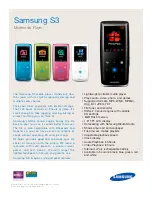
115
English
Glossary
NIC
Network Interface Card. An
expansion card that can be inserted
into a computer so that the computer
can be part of a network. Most NICs
are designed for a particular type of
network, protocol, and medium,
although some can be used in multiple
network environments.
NLM
NetWare Loadable Module.
NLMs are applications and drivers
that run in the NetWare server that
can be loaded and unloaded on the fly.
node
In a network, a node can be a
computer or some other device such
as a printer.
ODI
Open Data-Link Interface. ODI
supports multiple protocols and
adapters and is Novell's network
device driver interface standard.
OSI Model
Open Systems
Interconnection Reference Model.
OSI is a network model developed by
the International Standards
Organization (ISO) which divides
network functions into seven
connected layers (physical, data link,
network, transport, session,
presentation, application). Each layer
builds on the services provided by
those below.
packet
A unit of information that is
transmitted over the network. A
packet consists of a preamble, a
destination address, a source address,
data being transmitted, and a code
(such as CRC) for testing correct
transmission of the packet.
PCI
Peripheral Connect Interface.
The PCI local bus is a high
performance, 32-bit or 64-bit bus with
multiplexed address and data lines. It
is intended for use as an interconnect
mechanism between highly
integrated peripheral controller
components, peripheral add-in
boards, and processor/memory
systems.
Peer-to-Peer Architecture
A
network architecture in which each
node on the network has equal
responsibility: that is, any station can
contribute resources to the network
while still running local application
programs.
Plug and Play
Referred to as PNP, a
specification originated by Microsoft
for hardware and software
architecture that allows for automatic
device identification and
configuration.
PROM
Programmable Read Only
Memory. A memory chip that can be
written to only once. The difference
between a PROM and a ROM is that a
PROM is manufactured blank,
whereas a ROM is programmed during
manufacturing. To write data to a
PROM, a special device called a PROM
programmer (or burner) is needed.
Programming a PROM is often
referred to as burning a PROM.
protocol
A formalized set of rules
that describes how data should be
exchanged between two entities.
Protocols are typically divided into
modular layers, where each layer
Summary of Contents for 733/800/866MHz 1GHz
Page 1: ...Network Administrator Guide Online Guide Rev 6 0 Date 4 98 ...
Page 10: ...10 English ...
Page 11: ...1 Setting Up the Network Connection ...
Page 21: ...2 Installing Novell NetWare Drivers ...
Page 44: ...2 Installing Novell NetWare Drivers NET CFG Options for Novell NetWare 44 English ...
Page 45: ...3 Installing Microsoft Network Drivers ...
Page 61: ...4 Installing Other Network Drivers ...
Page 80: ...4 Installing Other Network Drivers NDIS 2 01 Driver with Other Networking Products 80 English ...
Page 81: ...5 Configuring for Remote Boot ...




































